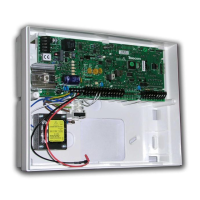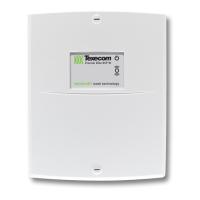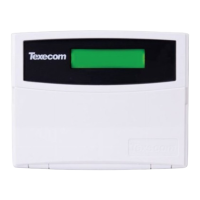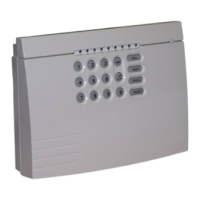INS303-5 17/22
Set Options switch 3 to ON (Add Tag Mode), (see chapter 6.2)1.
Set Options switch 4 to ON (Program Mode), (see chapter 6.2) The status2.
LED will flash green when the module is in program and add tag mode.
Set the user number 1-10 that you want to assign the tag to, using the3.
Address switches, (see chapter 6.2)
Present the tag to the centre of the module, an acceptance tone is generated4.
and the tag data is stored in the module for the selected user.
Repeat steps 3 and 4 if other tags are to be learnt.5.
Set Options switch 4 to OFF (Normal Operation), (see chapter 6.2) The6.
status LED will light red when the module is in normal operation.
Set the Door Strike time to the required setting using Address switches, (see7.
chapter 6.2)
Learning New Premier Elite Proximity Tags
When leaving the factory, the proximity tags are blank. When using this method of
learning the tags, the iProx module generates a unique 6 digit code that is stored
both in the module and tag. If the tag was already programmed the data will be
overwritten.
Set Options switch 3 to ON (Add Tag Mode), (see chapter 6.2)1.
Set Options switch 4 to ON (Program Mode), (see chapter 6.2) The status2.
LED will flash green when the module is in program and add tag mode.
Set the user number 1-10 that you want to assign the tag to, using the3.
Address switches, (see chapter 6.2)
Press and hold the tamper switch until the unit starts beeping.4.
Present the tag to the centre of the module, an acceptance tone is generated5.
and the tag is programmed for the selected user.
Repeat steps 3, 4 and 5 if other tags are to be learnt.6.
Set Options switch 4 to OFF (Normal Operation), (see chapter 6.2) The7.
status LED will light red when the module is in normal operation.
Set the Door Strike time to the required setting using the Address switches,8.
(see chapter 6.2)
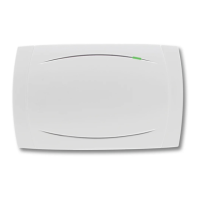
